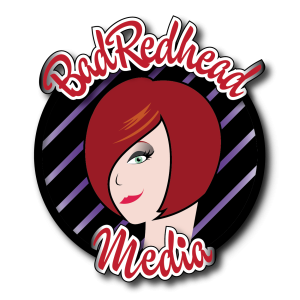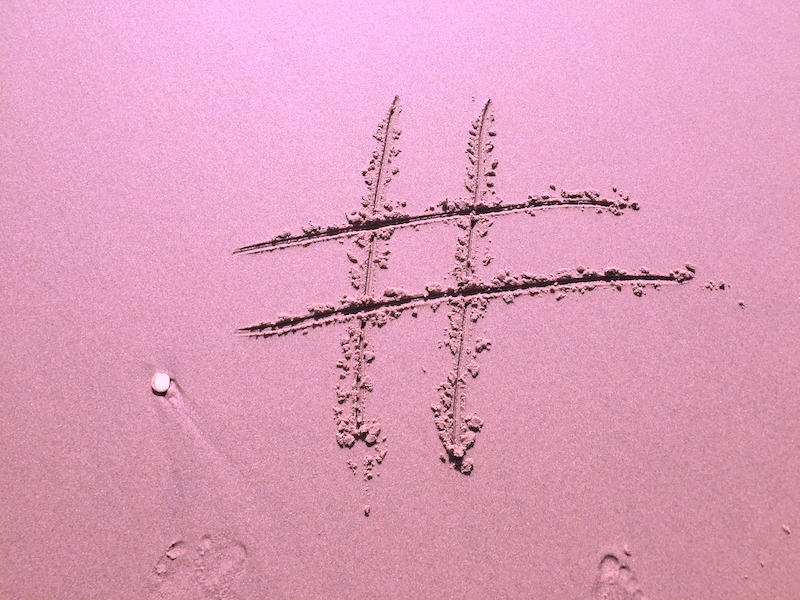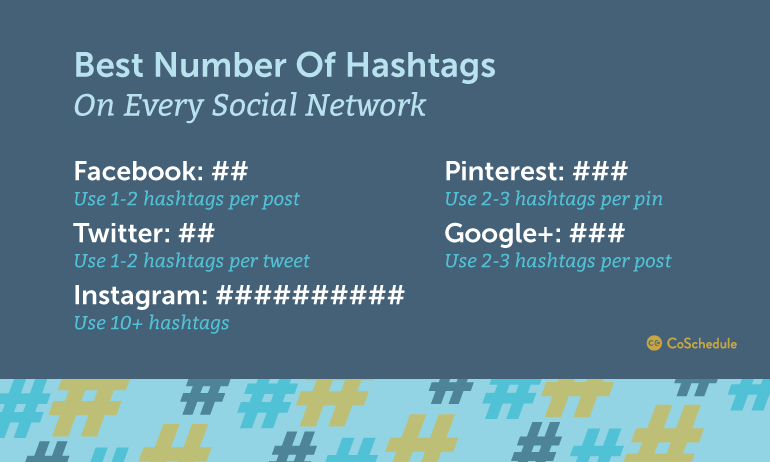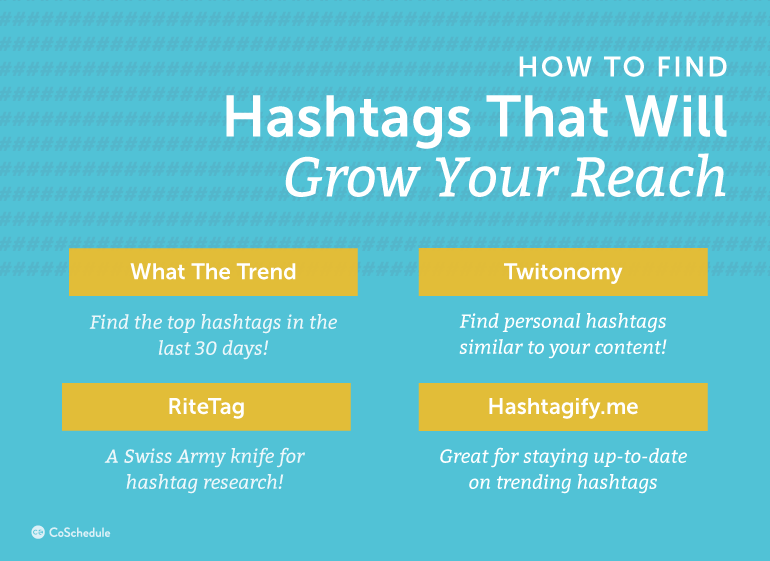How to Start Using Hashtags Effectively Right Now!
Twitter didn’t invent hashtags. Social media doesn’t lay claim to own them. If you’re one of those people who believe hashtags should still be referred to as the number sign, have ruined language, or should only be used in music, then move along.
This article isn’t for you. You’re not my demographic. I’m here to help authors learn how to market their books.
However, if you’d like to learn more about how to use hashtags in social media to increase visibility and connections, read on…
In our recent #BookMarketingChat (join us every Wednesday, 6pm pst/9pm est), our guest, the very patient Ben Sailer from CoSchedule (a site I LOVE — their blog is the bomb), reviewed the proper use of hashtags across all social media channels. If you missed our chat, I encourage you to review our Storify summary here.
I contacted Ben after reading his stellar hashtag article on the CoSchedule blog where he reviewed in great detail:
- the many advantages of using hashtags on the various social channels,
- best practices,
- analytics data,
- and how to use and not use them
and asked him to be my guest on #BookMarketingChat last week and it was great! If you missed it, again, take a look at the Storify summary, linked above.
So, back to the blog post he wrote: it’s a pretty exhaustive look, with lots of data, charts and graphs, which the geek in me loves! However, many authors told me they are still confused by the article and even the chat, so I wanted to break it down into some basics here for you.
Let’s deconstruct.
Hashtag Basics for Authors
According to CoSchedule, [share ]hashtags are a great way to connect with others and boost engagement[/share]:
Hashtags (# signs that help categorize social media content) make it easier for users to find related content. They can help increase the visibility of your messages and boost your social shares.
Stick to one or two hashtags per post since that tends to grow engagement on your content by 21%. When you start using 3 or more hashtags per message, you lower engagement by almost 17%.
Hashtags started on Twitter, where they are still the most popular, but are now used and accepted across all social media channels. The benefits of using hashtags are many:
- By adding the # sign to a word or words, the channel automatically creates a hyperlink (a link from a hypertext file or document to another location or file, typically activated by clicking on a highlighted word or image on the screen.).
- If others are also using that hashtag, you become more visible in that channel’s internal search. A word of caution: don’t go crazy and #hashtag #every #word #or #it #becomes #unreadable.
- Hashtags are a great shorthand way to say a lot of words, e.g., instead of saying ‘Dogs are the most amazingly wonderful creatures ever’ (because let’s face it, on Twitter space is very limited and dogs are cool), you could say #LoveDogs or #DogsRock. Not sure what to hashtag? More on that below.
- When participating in a Twitter chat, the chat has an assigned hashtag, e.g., #BookMarketingChat or #SexAbuseChat; so anyone who is participating can see all the other participants tweets and responses.
- Hashtags are important, particularly if they have CHAT in them. Do not ignore this fact. Why? Because chats are exactly that — a group of people meeting in an organized fashion to chat about a specific topic. When you jump in without paying attention to the hashtag, or adding the hashtag to your response, you are breaking the etiquette and culture of Twitter.
What are the ideal number of hashtags per channel?
Usually, less is more (except Instagram), but here’s a great guide:
How does this apply to you, author person?
Well, a few ways. I recommend you:
- Add #author, #writer, #blogger (whichever one applies) to your bio, because that will make you more visible in Search (on all platforms except Pinterest, which does not create a hyperlink. Many people use tools to follow accounts by keyword — e.g., ManageFlitter is one I’ve used and recommended for years — and we can enter #author as a keyword for tweets or accounts, so hashtagging keywords in your account bio helps your visibility for more reasons you may not realize.
- Limit your hashtags to a maximum of two to three per bio, otherwise it becomes almost unreadable and ‘hardly compelling,’ according to Ben.
- [share ]Use hashtags in tweets or shares to find common ground[/share] with other people of similar interests.
- Join what’s trending on Twitter. Every day, you’ll see what’s trending on Twitter, and occasionally, you’ll see something that looks fun or interesting, and you can join in by using the hashtag.
- Join author-based chats or chats involving your interests — remember to use the hashtag. I recommend using Tweetchat, Twubs, or Tweetdeck during chats, because people commonly forget to type in the hashtag on their responses — these tools do it for you.
How To Find Hashtags Relevant to You!
That’s really the trick, isn’t it? Social media is huge, and finding hashtags that are relevant to you is a wonderful way to focus your content, and find and follow others with similar interests. But how do you find them?
CoSchedule offers up four great sites that do this for you!
The four sites, which you explore on your own to discover more (or read about on the CoSchedule blog), are:
- What The Trend is a tool that can help you find the top hashtags from the last 30 days. You can get new viewers by finding creative hashtags that fit your content and are recently trending.
- Twitonomy can help you find personalized hashtags that revolve around the content you post on your Twitter accounts. It can also show you the most powerful influencers using a given hashtag, as well as who’s engaging the most.
- RiteTag is a hashtag power tool for discovering hashtags. It also offers up-to-date usage data to show you how hashtags are performing in the real world. While the premium plans offer more functionality, the basic free plan still offers plenty of utility.
- Hashtagify.me is another great tool for finding trending hashtags on Twitter. Plus, it also has an option to get email updates on trending hashtags as well.
Finally, if you want to also do a quick search on whatever channel you’re on, just type in the Search box and see what comes up! It’s easy.
My Personal Experience and Tips
I love hashtags, but caution you to use them judiciously (unless you’re on Instagram — they love them).
Here, in no particular order, are my Do’s and Don’ts:
DO:
- Add 2-3 hashtags to your bio (any bio that adds a hyperlink) that are specific to what you do, who you are, what interests you. If it’s not authentic, don’t use it. Also, be sure your visual header shows your branding as well.
- Participate in chats — remember, hashtags with chat in it (e.g., #SexAbuseChat or #BookMarketingChat) are always part of a scheduled chat. If you see these hashtags go by and you decide to respond, be respectful of the topic and always use the hashtag in the response. In addition, and most importantly, without using the hashtag, other chat participants will not see your response. Chats are a great way to interact with your demographic, too!
- Use relevant hashtags and stay on topic, e.g., if someone is discussing a trending topic like #FacebookIsStupidBecause and you start promoting your own book (DON’T DO THAT), that would be off-topic.
- Be respectful of the hashtag and remember that whatever you tweet is indexed by Google (and the Library of Congress) if you’re on Twitter — even if you delete it. If you’re on other social media channels, same rule applies. Stay on topic.
DON’T:
- Bogart a hashtag for your own self-promotional purposes, as mentioned above. It’s transparent, selfish, and tasteless. I’ve seen people capitalize on death and tragedy to promote their own work — please, never, ever be that person. Please.
- Ignore hashtags — pet peeve — they are there for a reason! Especially during chats. I think a lot of people don’t understand them, so they figure, ‘Hey, I’ll just ignore this hashtag, it must have no meaning because it means nothing to me!’ Um, no. The hashtag is the glue that brings a diverse group of people together and without it, your comment is just hanging there awkwardly in the wind and you look like a newb.
- Use hashtags to troll others because really? You are a professional. Act like it.
- Misuse hashtags by putting a bunch of words together, just because. When I first started on Twitter, a mentor told me that she got a lot of retweets (RTs) by #puttingsillystringsofwordstogether and how effective it was. I disagreed with her, because I found them very difficult to read. We butted heads about this and ultimately, I decided to ignore her advice.
Best Practices for Hashtagging
Pretty basic, but keep in mind:
- [share ]Capitalize the first letter of each word in a hashtag[/share], e.g. #BookMarketingChat or #SexAbuseChat or #MondayBlogs which are far easier to read than #bookmarketingchat #sexabusechat and #mondayblogs.
- Don’t add in any punctuation or symbols whatsoever or you break up the hashtag and it will not hyperlink, so do not do this: #Book.MarketingChat (see the period? that renders it useless). Same as if you added ‘, /, *, or {. No punctuation or symbols. This is really hard to remember or accept for authors who really, really want to use apostrophes, but get over it.
- Don’t confuse the @ symbol for the # symbol. @ is like someone’s address on Twitter (called their handle). It directs the tweet to them. If you use the # it does not direct a tweet to them directly and they won’t see it.
- And to really blow your mind, here’s a great example about numbers from CoSchedule:
If there are letters or numbers before the hashtag, it will break it before it even starts. So if your hashtag is 123#abc, abc won’t link to a hashtag.
If the hashtag is made up entirely of numbers, the hashtag will not hyperlink. But if you include letters with your numbers, the hashtag will work correctly. So #12345 won’t work. but #123abc will.
(I’m pretty sure even my brain is bleeding after that one.)
So now that I’ve spent the last two days writing this post, I hope you feel super edumacated about hashtags. If you have questions, ask Ben. I’m tired.
[blurbit]




Excellent way to use your hashtags. I never thought of making the first letter of the Hastags in capital. That’s something that I need to do.
The long running hashtags like #puttingsillystringsofwordstogether, recommended by your mentor, were a fun thing people were doing when hashtags were fairly new, and were a thing for awhile. But like so many things ‘net related, they kinda ran their course.
Agreed. I still see her doing them, and sometimes I see trending topics with #verylonghastagsthatarehardtoread (lol, you get the point) and it’s just ridiculous. When I train people, I remind them of this: hashtags are a great shorthand tool. Beyond increasing visibility in Search, beyond the hyperlinking, beyond all that tech stuff, the main benefit on a micro platform is the shorthand benefit.
For those of us who’ve been on Twitter awhile (I started in 2009 so what, 7 years now? gawd) we’ve seen so many Twitter changes — you’re correct, hashtag trends come and go as well. Thanks for weighing in, Katie!
[…] How to start using hash tags effectively right now […]
[…] hashtag is not just there to annoy or confuse you which is, in this case, #BookMarketingChat. People don’t understand hashtags (tip: if you’re on social media, figure it out. Nobody cares if you think they’re […]
Lots of great tips here. Good to know the # of hashtags that should be used on each social media channel.